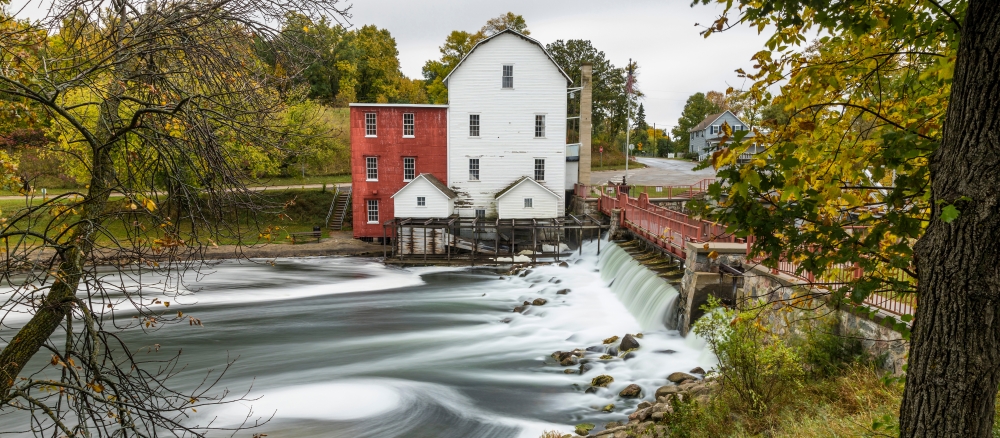The Otter Tail River Watershed (OTRW) encompasses approximately 1,952 square miles in west-central Minnesota, with the southwestern most portion of the watershed ending at the Minnesota/North Dakota border and at the headwaters of the Red River of the North. The watershed extends across major portions of Otter Tail and Becker counties, with smaller areas of the watershed within Wilkin, Clay, Clearwater, and Mahnomen counties. The very northernmost headwaters portion of the watershed lies within the White Earth Band of Ojibwe Reservation.
The OTRW is a surface water-rich watershed, containing over 2,800 miles of streams and more than 1,300 lakes, the most in any Red River Basin watershed. The many lakes and streams in the watershed are a draw for recreational activities and lake homes. Furthermore, the OTRW is one of the Red River Basin watersheds that is least impacted by flooding, with the many lakes and wetlands providing significant water storage and reduced flood contributions to the Red River of the North.
Land use within the watershed is largely agricultural, with cropland and pastures or rangeland accounting for approximately 45% of the overall watershed acres. Approximately 28% of the watershed is forested while roughly 21% is covered by water and wetlands. Development pressure is moderate to considerable in some areas, especially within and near the OTRW’s major cities and near the highly developed and recreational lakes, with occasional farms, timberland, and lakeshore being parceled out for recreation, lake homes, or country homes. Growth and development of these areas is expected to continue.
Two recent reports (TMDL and WRAPS listed below) indicate that water quality conditions in the OTRW are generally quite good. A majority of assessed streams (over 60%) and lakes (85-91%) support fish and aquatic insect communities and recreation. However, a number of impaired waters, or waters that fail to meet applicable water quality standards, are scattered throughout the watershed.
Impairments were found in some stream reaches where fish and insect communities are stressed by unstable stream flows, insufficient physical habitat, barriers such as dams, elevated levels of suspended sediment, and fluctuations in water temperature and dissolved oxygen. A number of stream reaches in the watershed have impaired aquatic recreation due to elevated levels of E. coli bacteria. Excess nutrients (phosphorus) in some lakes is fueling algae blooms, reducing clarity and affecting recreation. Fish communities in some impaired lakes are impacted due to excess nutrients, physical habitat alteration such as lakeshore development and aquatic vegetation removal, temperature changes, and decreased dissolved oxygen.
Climate change is bringing increased average temperatures and more frequent and intense storms that can add to pollutant-laden runoff entering lakes and streams. Warming temperatures and increased precipitation can have many different effects on the watershed, and contributors such as increased impervious surfaces and loss of natural wetlands can exacerbate the effects of climate change.
Monitoring and assessment
Realtime flow monitoring was installed and continues at three locations in the watershed. Those flows can be found on the MPCA/DNR cooperative stream gaging webpage.
Strategy development for restoration and protection
- (EPA approval 10/14/2021)
- (MPCA approval 9/14/2021)
Additional TMDL projects
- (EPA approval 2/12/2007)
- (EPA approval 8/4/2016)
Lower Otter Tail River Restoration federal 319 grant project
This project, completed in the fall of 2019, included surveying, planning and designing channel restorations for approximately 20 river miles channelized in the 1950s as part of a flood reduction project. The project area is located between Orwell Dam and Breckenridge Lake. The idea is to improve water quality by reducing sediment associated with stream bank failure, erosion, and channelization. This project provides the design work for future restoration projects that will aim to address the excess sediment and retain the river’s flood damage reduction features, including those mentioned above and outlined in the Lower Otter Tail River Implementation Plan.
More information
- Otter Tail River One Watershed One Plan
- Wilkin Soil and Water Conservation District
- Pelican River Watershed District
- Becker Soil and Water Conservation District
- East Otter Tail Soil and Water Conservation District
- West Otter Tail Soil and Water Conservation District
- Cormorant Lakes Watershed District
- Buffalo-Red River Watershed District
- White Earth Nation Division of Natural Resources
